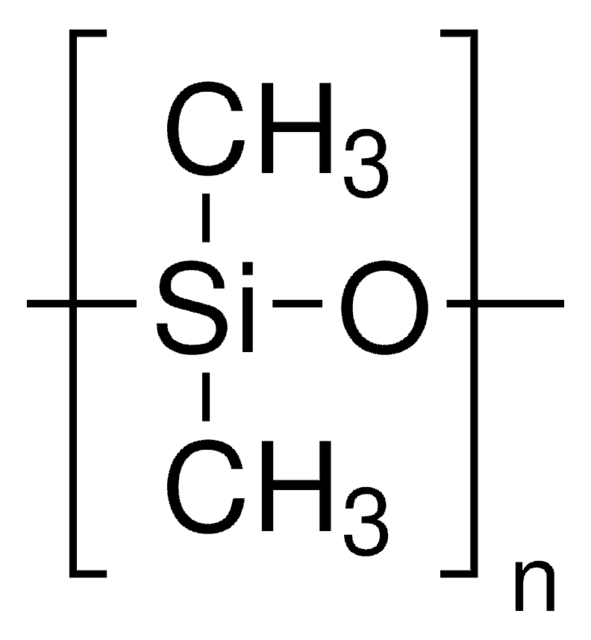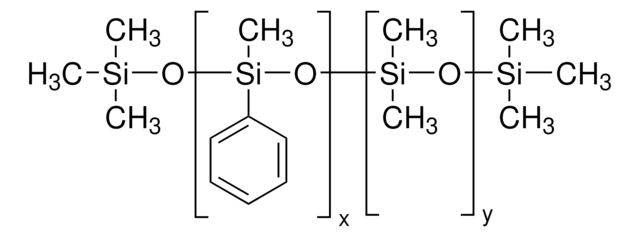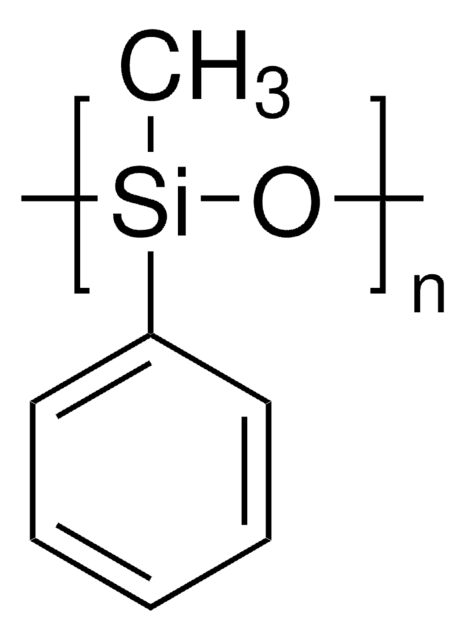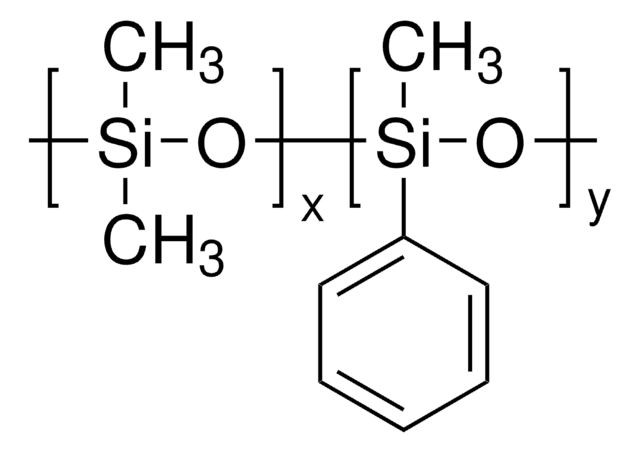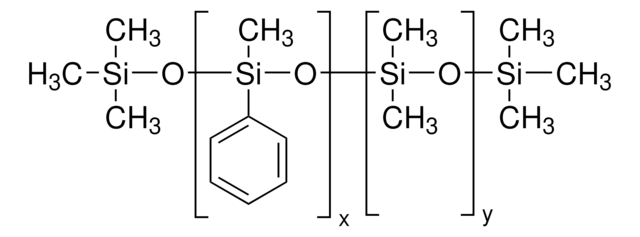10836
Silicone oil AR 20
viscosity ~20 mPa.s, neat(25 °C)
Sinónimos:
Polyphenyl-methylsiloxane
Iniciar sesiónpara Ver la Fijación de precios por contrato y de la organización
About This Item
Productos recomendados
refractive index
n20/D 1.441-1.445
viscosity
~20 mPa.s, neat(25 °C)
density
1.000-1.020 g/mL at 20 °C
General description
Silicone oil AR 20 is a polydimethylsiloxane with phenyl groups that is commonly used as a heat transfer or pressure transfer fluid.
Application
Silicone oil AR 20 has been used:
- As a Segmenting fluid in polymerase chain reaction (PCR).
- In hollow fiber liquid-phase microextraction (LPME) procedure for extraction of hydrophobic drugs from human breast milk.
- As a fluid to demonstrate pores in droplet interface bilayers (DIBs).
Features and Benefits
Especially good thermostability (-50°C to +230°C)
Storage Class
10 - Combustible liquids
wgk_germany
WGK 3
flash_point_f
338.0 °F - Not applicable
flash_point_c
170 °C - Not applicable
ppe
Eyeshields, Gloves
Elija entre una de las versiones más recientes:
¿Ya tiene este producto?
Encuentre la documentación para los productos que ha comprado recientemente en la Biblioteca de documentos.
Los clientes también vieron
Liquid-phase microextraction of drugs from human breast milk
Bj?rhovde, A, et al.
Analytica Chimica Acta, 491(2), 155-161 (2003)
Formation of droplet interface bilayers in a Teflon tube
Walsh E, et al.
Scientific reports, 6(2), 34355-34355 (2016)
E J Walsh et al.
Biomedical microdevices, 7(4), 269-272 (2006-01-13)
This paper evaluates the compatibility of segmenting fluids for two phase flow applications in biomedical microdevices. The evaluated fluids are chosen due to the variations in fluid properties and cost, while also reflecting their use in the recent literature. These
Helena L E Coker et al.
Biophysical journal, 116(6), 1085-1094 (2019-03-09)
Diffusion in cell membranes is not just simple two-dimensional Brownian motion but typically depends on the timescale of the observation. The physical origins of this anomalous subdiffusion are unresolved, and model systems capable of quantitative and reproducible control of membrane
Gema Flores et al.
Journal of chromatography. A, 1153(1-2), 29-35 (2007-02-20)
A method based on the use of absorbents as packing materials in the interface of the direct coupling between reversed phase liquid chromatography and gas chromatography (RPLC-GC) is proposed. To that end, a comparative study on different adsorbents and absorbents
Nuestro equipo de científicos tiene experiencia en todas las áreas de investigación: Ciencias de la vida, Ciencia de los materiales, Síntesis química, Cromatografía, Analítica y muchas otras.
Póngase en contacto con el Servicio técnico